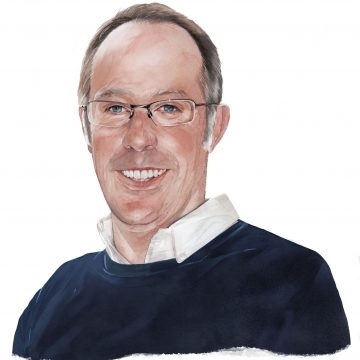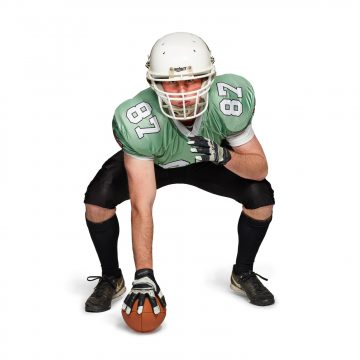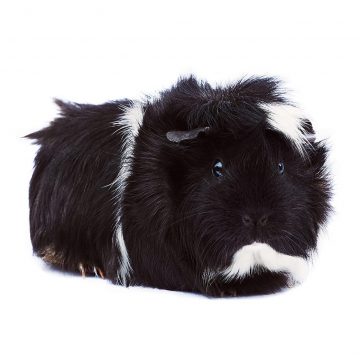Down on the farm
Two hundred cows. Three hundred lambs. Two hundred and fifty hectares of arable. And a wood. Just four miles from Cambridge… welcome to the University’s farm.
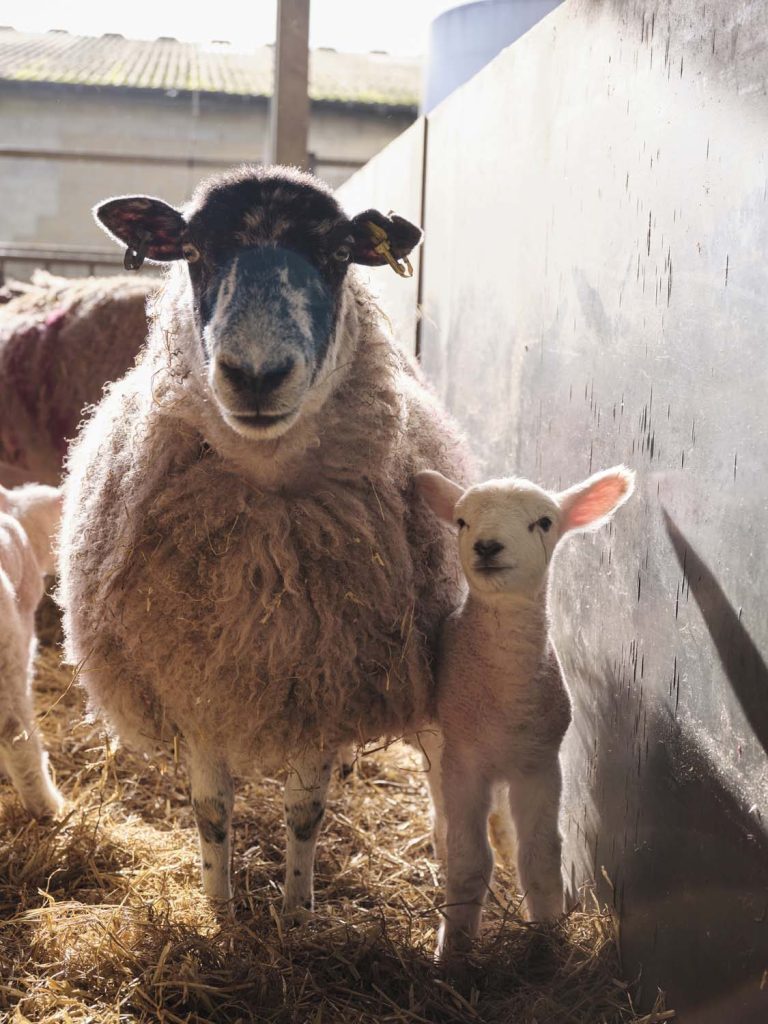
Cambridge in February. Bitter cold. Middle of the night. As his friends stumbled in from a night out, vet student Ollie Bardsley (Magdalene, Fourth Year) got the call. It was his turn to be on lambing duty at Cambridge University’s Park Farm, and one of the ewes was about to deliver. But this was not just any ewe.
“The most common number of lambs is two. Sometimes you get triplets, and very rarely get quads,” Bardsley says. That year, however, one of the farm’s ewes was indeed expecting quads. “I wasn’t particularly confident about lambing, and my friends kept joking that the quad ewe was going to go into labour the night I was there. And of course, at 3am, just as the delirium was starting to set in, she did.”
My friends kept joking that the quad ewe was going to go into labour the night I was there. And of course, at 3am, just as delirium was setting in, she did
There was initial panic, especially as his fellow student was tied up with another delivery – but eventually, together, they delivered four healthy lambs. “I’ve got a photo on my phone of me with them. It was such an important experience for me.”
Because if you want to become a vet, books can only get you so far – practical, hands-on experience is vital. Which is where the University’s farm comes in. “I’d never been near cows or sheep before,” says Bardsley. “But as students, we have to know how to handle and treat all of the major domestic species. So it’s really important that we get that experience.”
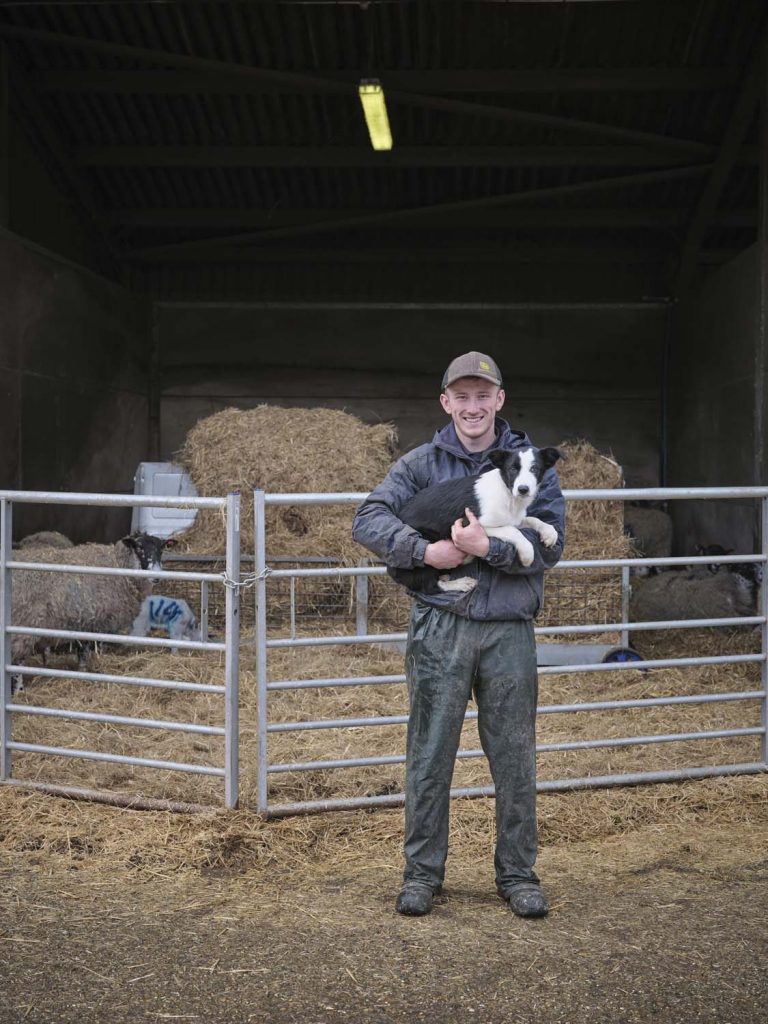
Cambridge has owned a farm since 1900. Originally at Impington, it moved to Gravel Hill in 1910, before relocating to its current home in Madingley in 1997. Encompassing more than 250 hectares, the farm is home to 230 Holstein FriesMcCrone cows and a flock of 250 North Country Mule sheep. And on most days, alongside the animals, you’ll also find a herd of students.
“It’s very convenient and gets heavy use,” says Ian McCrone, Professor of Farm Animal Health and Production. “It gives students who haven’t had the opportunity to be on a farm to see how it works and to be involved with species they’ve not had experience of before.” First year students start with an introduction to handling large animals. “Then we’re teaching them anatomy, basic husbandry, clinical examination and, in final years, we’ll do a lot of herd health,” says McCrone. Fourth Year students are responsible for the lambing each year.
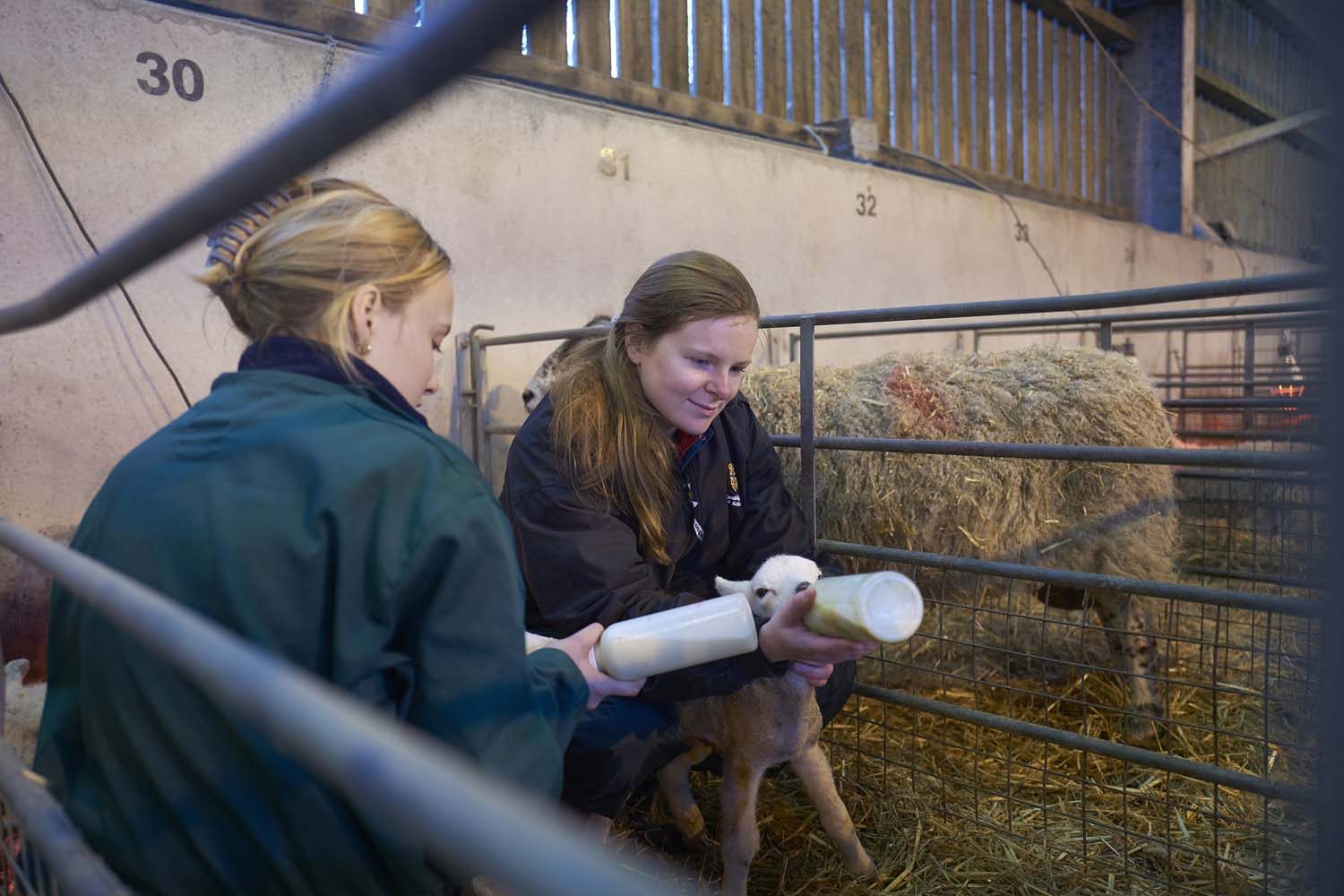
But Park Farm isn’t just an incredible teaching resource, it’s also a commercial business, operated as part of the Estates Division. The dairy unit produces around two million litres of milk a year, supplied to Arla, the fifth biggest dairy company in the world. It is also an innovator.
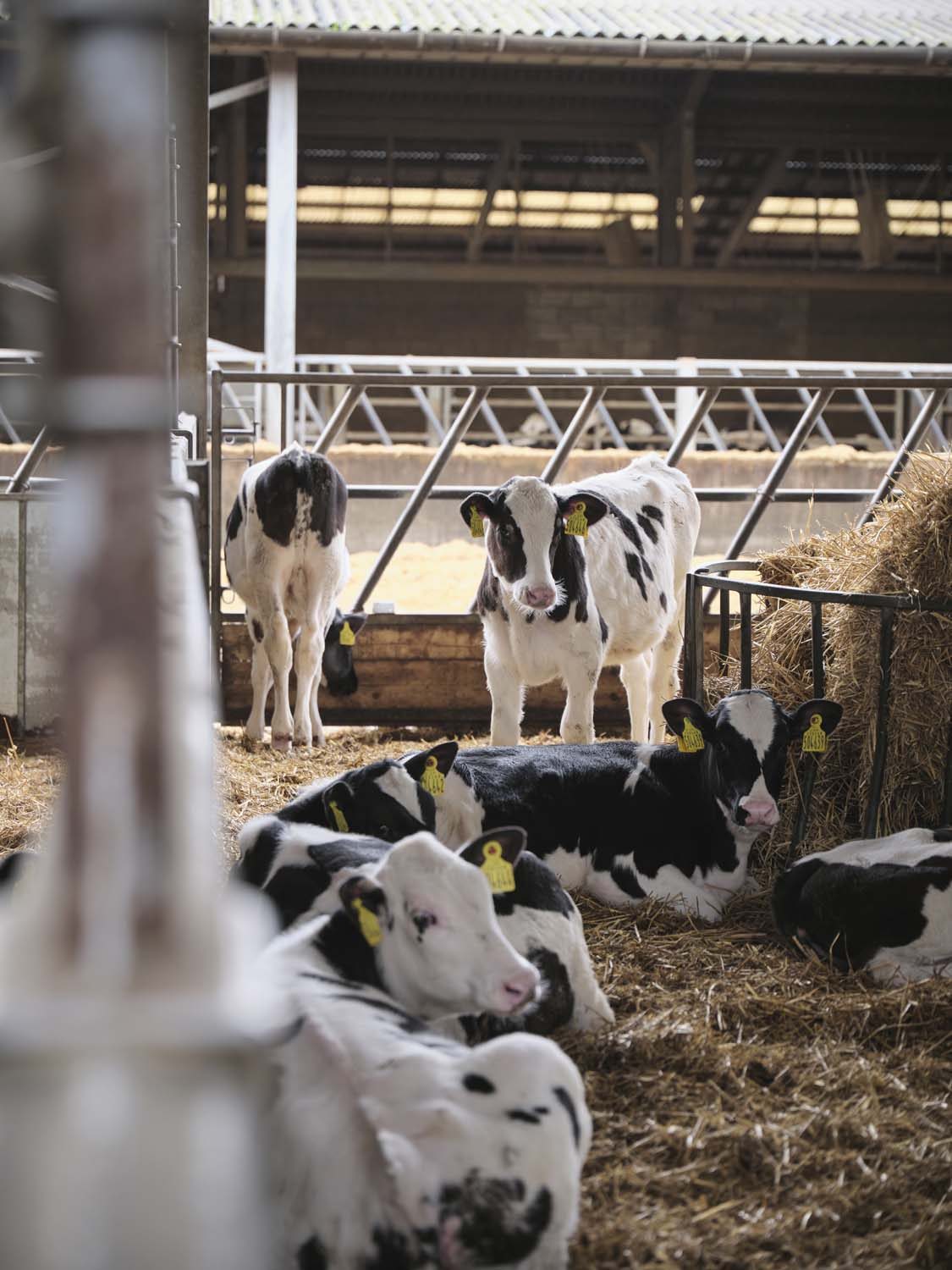
“The students are getting exposure to a state-of-the-art farm,” says Professor Mark Holmes, Head of the Department of Veterinary Medicine. “The farm was a lot less commercial in my day,” he says of his time as a vet student at Fitzwilliam. “We used to go with a bucket to the dairy herd to get milk and put it in our coffee and on our cornflakes. Needless to say, that wasn’t a very good idea, and the students definitely learned about the value of pasteurising milk.”
Things have moved on significantly since. Paul Kelly joined as Farm Manager in 2019 and is one of four core farm staff. “It’s surprising how many people within the University don’t know we exist,” he says. As well as managing the livestock and day-to-day operations, his role also involves finding new ways to make the farm as sustainable as possible. The agricultural industry is a major producer of greenhouse gas emissions, which contribute to climate change, so the industry as a whole is taking steps to address this. Park Farm is a leader in this space, and in 2023 was named a Leaf Demonstration Farm, in recognition of its sustainable farming practices, and commitment to improving biodiversity and reducing the carbon footprint of its dairy enterprise.
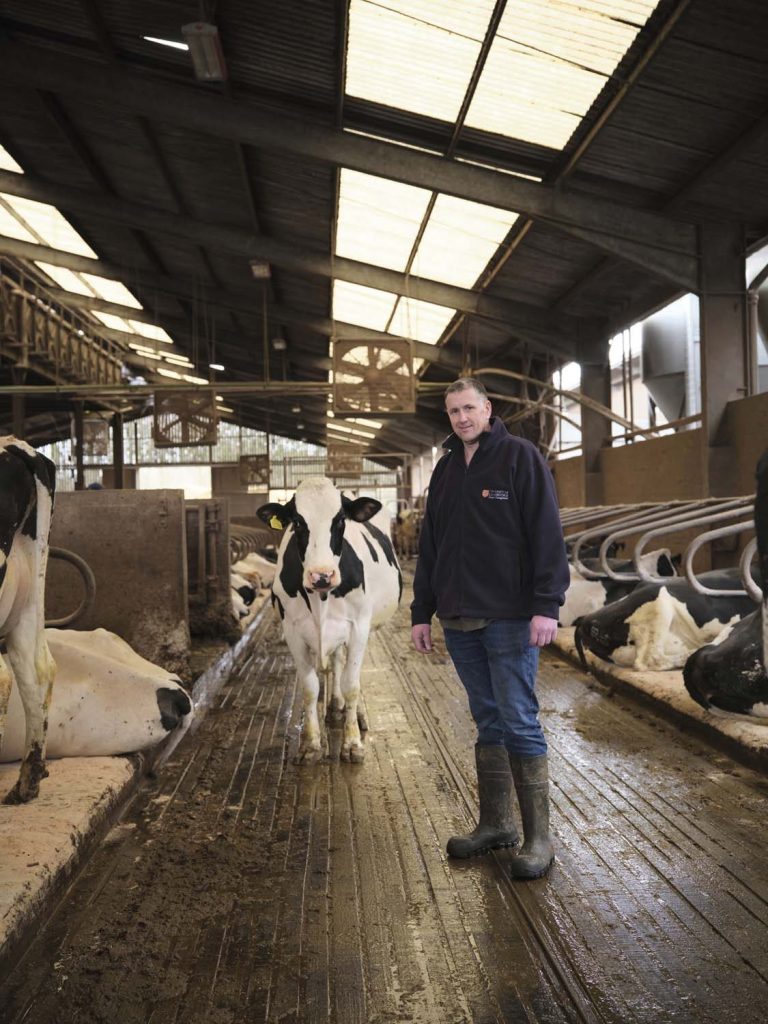
Steps taken include regenerative soil practices, installing solar panels, and cutting back on purchased feeds while maximising the farm’s own silage production. In four years, the carbon footprint of milk produced at the farm has fallen from 1.27kg of carbon per litre to around 1kg.
And what benefits the environment has positive outcomes for the farm too. “We’re focusing on lowering the farm’s carbon footprint,” says Kelly. “And the flipside is that the technical advances improve the efficiencies of the farm.”
It’s a voluntary milking system, the cows are not forced to go in and get milked. They go in whenever they want
In 2021, the farm installed a slurry-fed anaerobic digester that converts waste from the cows into methane gas, which is then harvested off and converted to electricity. “Around half of our daily produced slurry goes through the anaerobic digester, and it currently produces slightly more than half of our electricity requirements,” says Kelly. Waste from the anaerobic digester is spread back on the field to help grow crops to feed the cows. “I like to think of it as the circle of farming,” says Kelly, who hopes the farm will have a methane-powered tractor in the future, too.
Not that it isn’t already at the forefront of farming technology. In the dairy shed, cows patiently queue up of their own accord to be milked, as they have done for more than the decade since the farm became an early adopter of robotic milkers. When a cow enters the milking area, the machine scans its collar to identify the cow, adjusts its measurements accordingly and – after a brush disinfects and cleans the teats – attaches itself to the cow, who is busy munching on some food.
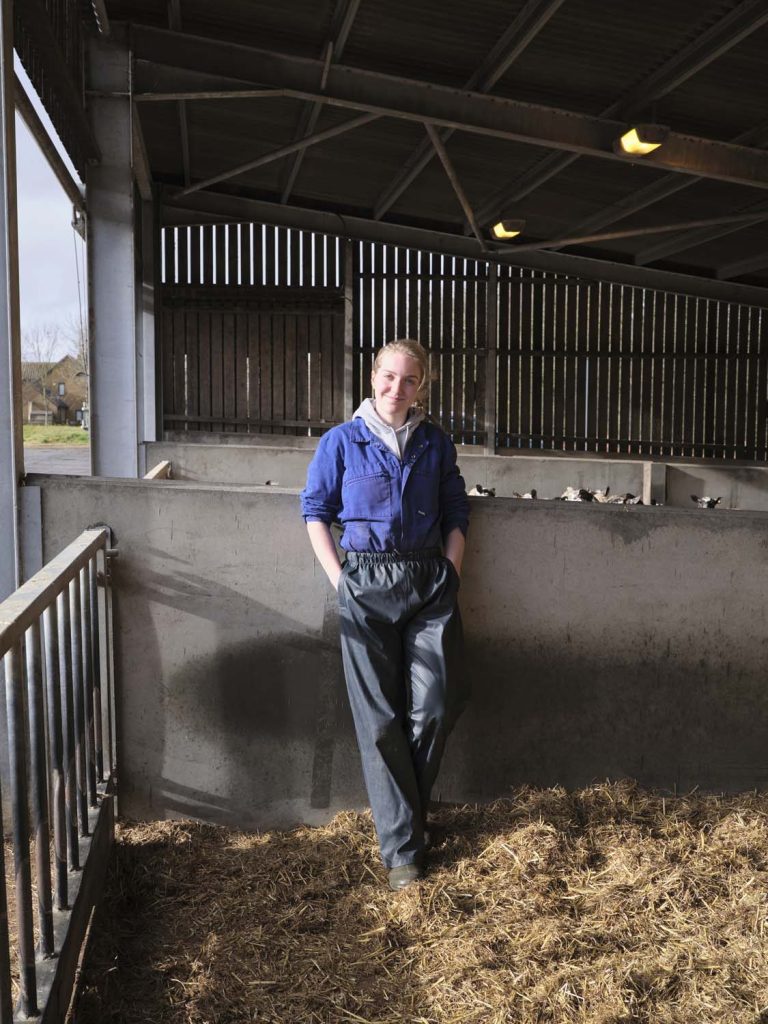
“It’s a voluntary milking system,” says Kelly. “The cows are not forced to go in and get milked. They go in whenever they want.” That works out an average of 3.2 times a day. The cows’ collars feed back data on their behaviour – how often they’ve been milked, how much they produce, feeding habits and how active they are during the day. “Robotic milking is one of the fastest growing developments in agriculture, because it’s such a struggle to find staff to do that job now,” says Kelly. “A big advantage of robotic milking is that you don’t have to be there at three or four in the morning.”
Emily Craven (Murray Edwards 2007) was there when the new system was brought in. “I was helping push the cows up towards the robots on the first night,” she said. “They needed a little bit of help to understand at first as they were used to going to the parlour.” She says it’s not just experience with animals that Park Farm offers, but a vital understanding of the challenges farmers face and the importance of building a relationship with them. “Whatever we want to achieve with our animals is reliant on communication with a farmer. What I love about farm practice and particularly dairy is that you get to form good relationships with your clients, because you work with them consistently.”
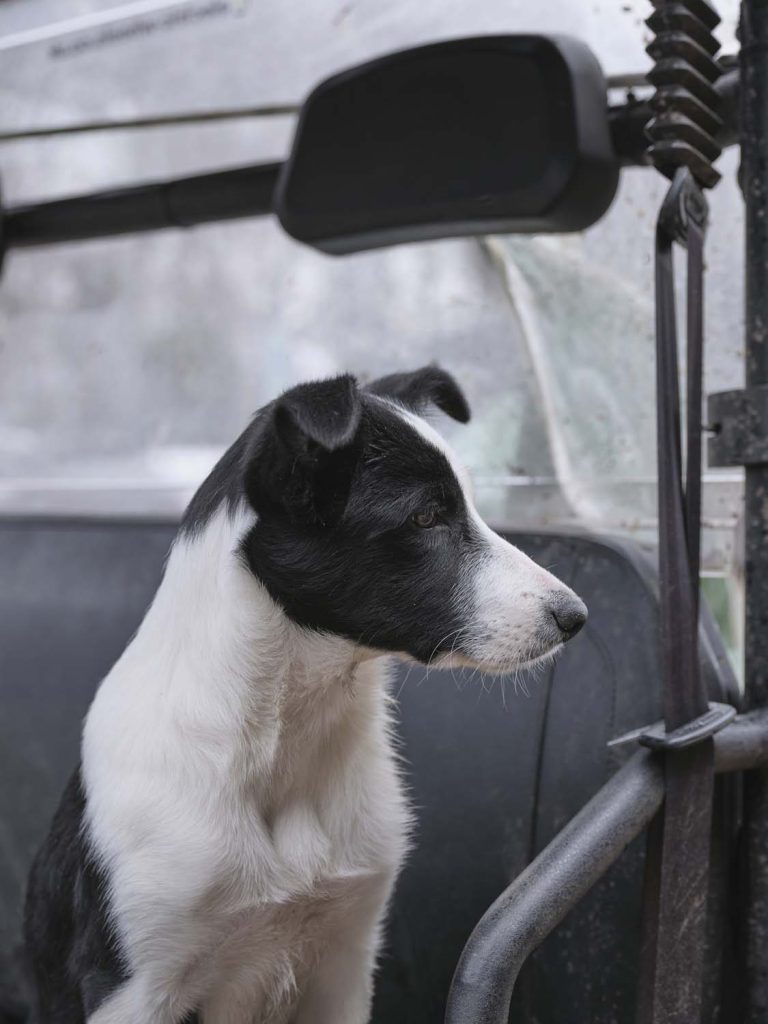
Craven’s time on Park Farm helped convince her to specialise in farm animals. After graduating, she went on to work as a farm vet, and in 2019 she won the British Veterinary Association Young Vet of The Year award. “When you’ve been stuck in lectures it’s really nice to get out on the farm and remind yourself why you want to do this,” she says. “But what is also so great is that the farm offers a really safe space to learn. You don’t have to worry about asking stupid questions, and can take as much time as you need.”
Craven is currently studying for a PhD in farm animal welfare, something that’s also a priority for Park Farm, which views its cows as employees of the University. “Our farm animals do far more than just provide milk, they also help train the vets of the future,” says Holmes.
“In return we owe it to those cows to give them the right environment and the best possible care. Something like lameness is still a problem, but we’re working very hard to try and make it better because every cow that is limping is one that is suffering. We look at the design of the buildings to reduce the wear and tear on their feet. We’ve made sure that their nutrition supports the health of their feet, and we’re thinking about how we breed cows to have better feet.”
When you’ve been stuck in lectures it’s really nice to get out on the farm and remind yourself why you want to do this
At Park Farm all cattle undergo genomic testing when young. “We’re able to predict the animals with the best potential to be the healthiest, the most fertile, the most milk producing, the best on their feet and the best feed converters,” says Kelly. The farm then only breeds from these animals to replace the milking herd – using artificial insemination with sexed semen to guarantee a female.
As farming changes, so does veterinary medicine. With access to new technology and data, the emphasis is shifting from treating medical emergencies to preventative medicine and care. “When you start out in your career, it’s really exciting to bring calves back from the brink of death with clever fluid therapy and things like that,” says McCrone. “But preventing those calves ever getting into that state in the first place is much more important for the farmer and better for the animals.”
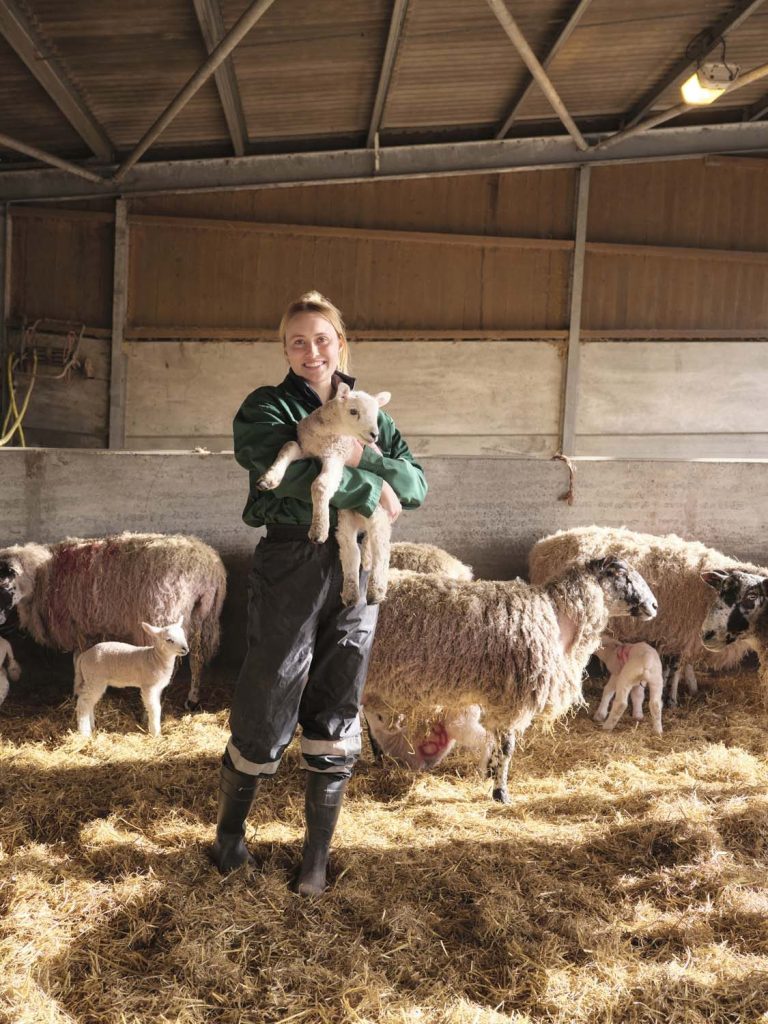
Combining a teaching facility with a commercial farm is a juggling act, and any decisions are made with all parties in mind. “We’re aware that the farm is only here because there’s a vet school here, and I’m also very aware of how important the farm’s success is for our veterinary teaching,” says McCrone. “We work together very well.”
Those who come to study veterinary medicine at Cambridge in years to come are likely to find increasingly innovative facilities at Park Farm. “We’re still on that journey,” says Kelly. “There’s lots more to do and improvements to be made. I have some big ideas to take the farm forward, without losing sight of the fact that we are a teaching resource to develop the successful vets of the future.”

